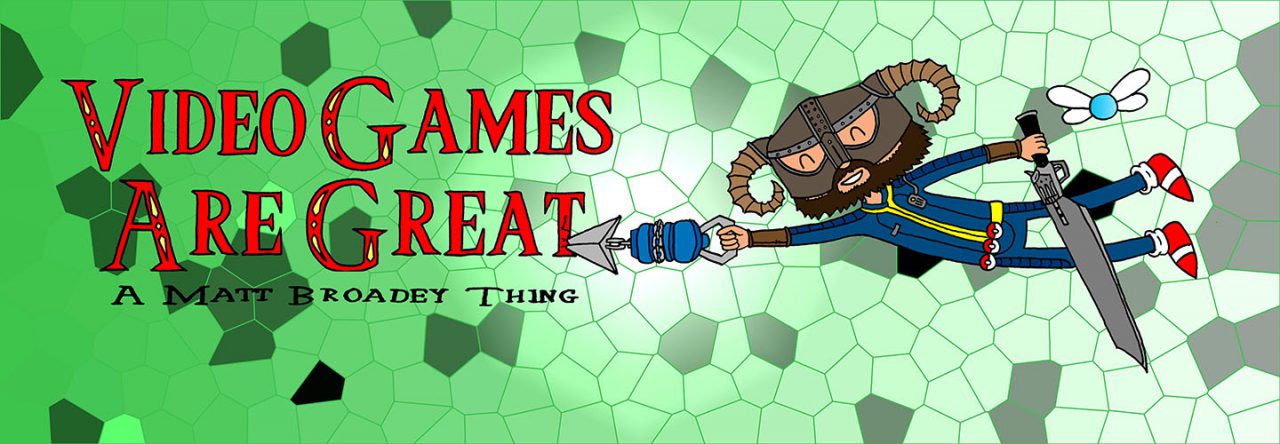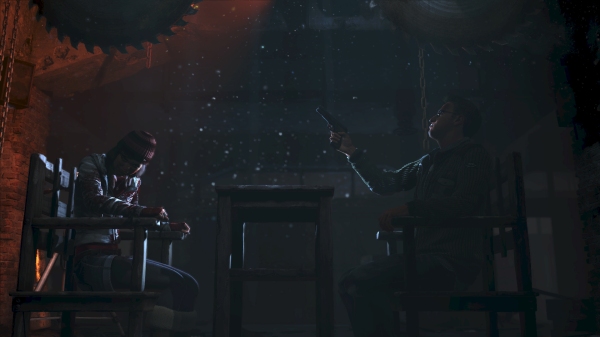Punishing difficulty has been a part of games since the heyday of arcades, often a method of eking out more money from consumers to keep plugging at their favourite games without starting over. Then games consoles were introduced to homes, a luxury expensive for many, meaning games had to last to feel like a worthwhile product. Difficulty was the easiest way to make games feel longer with data storage at the time limiting the scope of the game. Making games difficult was the easiest way to keep people playing for longer for better product satisfaction.
Nowadays, many people have no problem polishing off most major video game releases, especially with their tailorable difficulty options. Games known for being difficult are kind of lumped together in a niche under the umbrella term of “hardcore”. Dark Souls, ARMA, Super Meat Boy, Ikaruga, and Darkest Dungeon are all games which thrive on their hardcore status, each requiring a mixture of skill, precision, strategy, and determination to prevail.
Going into a difficult game gives you a kind of mentality; you steel yourself, and start to adopt the way you look at the challenges the game throws at you: the environment, the enemies, your inventory. It draws you into the experience, and gives you an appreciation for the world. But it’s very, very important to maintain the fine balance between a dangerous environment and unfair odds. This is part of why when difficulty feels forced, unfair, or artificial, it’s so frustrating; we want to immerse ourselves in a world, a character, and a purpose. When the world breaks character and obstructs our character’s purpose in the name of challenge, that immersion is broken and it’s difficult to placate an embittered player. Despite the positive uses for punishing difficulty, not all difficult games are good, and not all good games are difficult; it’s all about how the game makes use of its challenge.
Immersion-breaking difficulty is widely known as “artificial”, because the tasks the game throws at you aren’t intrinsically any more difficult; the system is stacked against you, and it feels like the game is breaking character to make itself harder. Imagine a section in which you need to dodge obstacles to progress, but the speed of the oncoming objects is such that you basically have to guess when to dodge, and in which direction. This is artificial challenge because you can’t overcome it with skill, only a mixture of luck and tenacity, and can be found in the final boss to Super Meat Boy- a game whose challenge is otherwise fair.
Late in some games, the challenge can feel artificial in cases where the developers just buff the enemies’ health while your damage tolerance and output remain the same. Not only does this stretch out late game encounters to potentially tiring lengths, it can also kill the sense of momentum of combat that the game has established which can be very jarring. Imagine learning over the course of an FPS that it takes about half a magazine of ammunition to kill a certain enemy class, but towards the late game they can suddenly soak up three-quarters to a whole magazine to do the same job. It’d throw you off-balance, reminding you that you’re in a game where NPCs’ stats can be buffed at the will of the designers.
This can be countered with adaptive difficulty systems, like in Skyrim where enclosed areas are scaled to your character as you enter them, populating them with higher-level enemy types as you grow in power yourself. This way, you can come across underpowered and overpowered enemies in the open world, but quests can tailor themselves to your character’s strength. I’m also a fan of games like Fallout 4 and Dragon’s Dogma, where open worlds have areas populated with enemies that might take out an under-levelled character with a single hit in the early game, but can be tackled or even crushed later on. This gives you a real sense of satisfaction when you return to an area you’ve feared for hours but can now breeze through. The difficulty of the original encounter sticks in your mind, and throws down a gauntlet to your avatar, and by extension you.
Another style of difficulty that lots of people find frustrating is a steep difficulty curve that means the player has to spend some time repetitively grinding to buff their stats enough to match or at the very least brute-force their way past a difficult boss (this is mostly concerning the JRPG genre, but can be applicable to RPGs in general). However this can be used to persuade a player to engage with the game world, seeking out side quests to gain levels and learn a little bit about the world as they go. I don’t mind this so much, but it understandably leaves a lot of people cold, especially if repetitively grinding enemies in the world is the only option. That can kill the pace of a good narrative- you’ve been doing okay up until now, so why throw up a wall as we reach the natural mini-climax of a section with a boss?
The impact of this can be lessened in a number of ways. The boss or section in question absolutely must be escapable for struggling players. Locking a player into a scenario for which they are under levelled is only going to make them scream as they throw themselves up against a brick wall again and again. When they decide that they’re not yet ready to beat the section, they need to be able to quickly and easily backtrack to a location ripe for the grind. When they get there, they should know, or be easily be able to find out, readily available options to get themselves levelled up to scratch. These options need to be varied, and ideally offer their own small narrative threads to satisfy the player’s need for narrative payoff while their main story progress is halted. Lastly, the combat (or whatever mechanics you’re using to grind XP) needs to be intrinsically enjoyable, or else being forced to go through it for a little while is going to grate; subpar battle systems might be ignored when you’re following a good story, but the lack of substantial narrative payoff can sully your experience when you’re only experiencing combat for a grind. Even non-gameplay factors need to be considered, like repetitive battle music or lengthy loading or transition times that can get on your player’s nerves.
Some games are challenging because of a poor design or an oversight from the developers. Poor control over your character’s movement, unclear jump distance and landing detection in platformers, and hitboxes that extend beyond your avatar’s bodily bounds are examples of poor game design that can make a game frustratingly difficult to play through. In the case of adventure games, puzzles may be unintuitive or require dreaded pixel hunting. This more often encourages recklessly clicking the screen rather than actually engaging with environmental details, which I can only assume is the intention.
While many games opt to provide multiple difficulty options for players, I’m personally a fan of games which simply are the difficulty that they are, for instance Dark Souls. This forces a developer to really look at how they teach a player the mechanics and rules of the game. There aren’t any menu options to reduce difficulty, so the player knows that there’s an alternative approach to adopt if they get stuck. And the game world feels more cohesive to me if I know I’m playing through the “true” version of the game, rather than one version of the game that’s arbitrarily harder or easier than another. I understand that developers want their game to be enjoyed by a range of consumers with different skill levels, but I admire those games that take risks to adhere to the vision of a world and how we should interact with it.
The Souls series is, to me, a paragon of how to make a game challenging without sacrificing fairness. The game world, NPCs, and player character all follow the rules of the game without deviation. You control your avatar with an absolute sense of space within the game world; swing your sword, and a small clip registers as a hit. Likewise with enemies’ attacks on your person. It’s this dedication to inch-perfect precision in both Souls’ design and expectation of its players that the game builds its unshakeable sense of place. Dangers can always be seen early enough if you’re cautious and keen-eyed, and even the most relentless of aggressors have weaknesses to exploit if you can keep a cool head and observe them. The game never breaks its own rules, so it feels fair when you die, and often you respawn with a good idea of what you did wrong.
Difficulty is not only useful for providing that all-important sensation of satisfaction, but also in helping us relate to our avatar and the world they inhabit. Our avatar’s epic tasks of heroism become ours when we work a little bit harder for them; we can relate to our avatar’s struggle because victories are hard-won for us, too. When it’s firm but fair, a challenging game raises the stakes and makes us more invested in the world, the characters, and the story being told. That’s not to say that games that are easy to complete don’t have their own form of difficulty; just try keeping everyone alive in your first run of Until Dawn, or getting 100% of the collectables in Yoshi’s Wooly World. Ask anyone about their early hours of Minecraft, and you’ll no doubt trigger a flood of tales about the improvised shelter in the terrifying first night, and fending off creepers from their delicate first hovel. But tying a game’s progression to a demanding challenge can do wonderful things for the immersive quality of a game, and handling that challenge should be one of the factors at the forefront of the developers’ mind when they design the experience.
Image credits- kotaku.com














